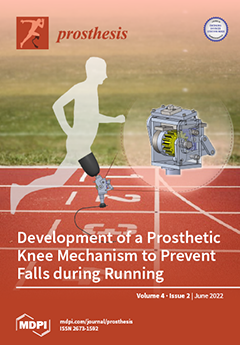Nowadays, total knee arthroplasty (TKA) is widely considered to be the gold standard for treatment of end-stage knee osteoarthritis. Although the optimal mode of fixation in TKA continues to be an important area of investigation, cementless fixation offers the possibility to gain biologic
[...] Read more.
Nowadays, total knee arthroplasty (TKA) is widely considered to be the gold standard for treatment of end-stage knee osteoarthritis. Although the optimal mode of fixation in TKA continues to be an important area of investigation, cementless fixation offers the possibility to gain biologic fixation, preserve bone stock and mineral density, and potentially improve survivorship. The purpose of this retrospective study was to evaluate the clinical results of a posterior-stabilized total knee arthroplasty with cementless tibial component in porous tantalum, comparing two groups: Group A (30 patients), TKA with a monoblock component and two pegs, and Group B (22 patients), with a modular component and three pegs. Knee Society Score (KSS) and the Knee Injury and Osteoarthritis Outcome Score (KOOS) were submitted to the patients, and radiographs were collected at the last follow-up. The mean follow-up was 26.32 (20–40) months. Significant differences were not detected between the postoperative KSS values in the two groups (
p = 0.44). Evaluating KOOS outcomes, we found in Group A that the rating system showed a statistically significant improvement from a preoperative average rating of 51.4 (SD ± 15) to an average of 72.66 (SD ± 19) at final follow-up (
p < 0.05). In Group B, the KOOS rating system showed a statistically significant improvement from a preoperative average rating of 48.3 (SD ± 18) to an average of 79.54 (SD ± 17) postoperatively (
p < 0.05). Comparing KOOS final outcomes between groups, we found no statistically significant difference at the mean final follow-up (
p = 0.20), with the exception of the sport-related section (
p < 0.05). Radiological evaluation at the final follow-up did not show any sign of polyethylene wear, radiolucency, septic or aseptic loosening, or change in alignment in either group. The current study demonstrates an excellent survivorship of cementless tibial components in porous tantalum and the possibility of osseous integration, without significant differences between the two groups under investigation.
Full article





